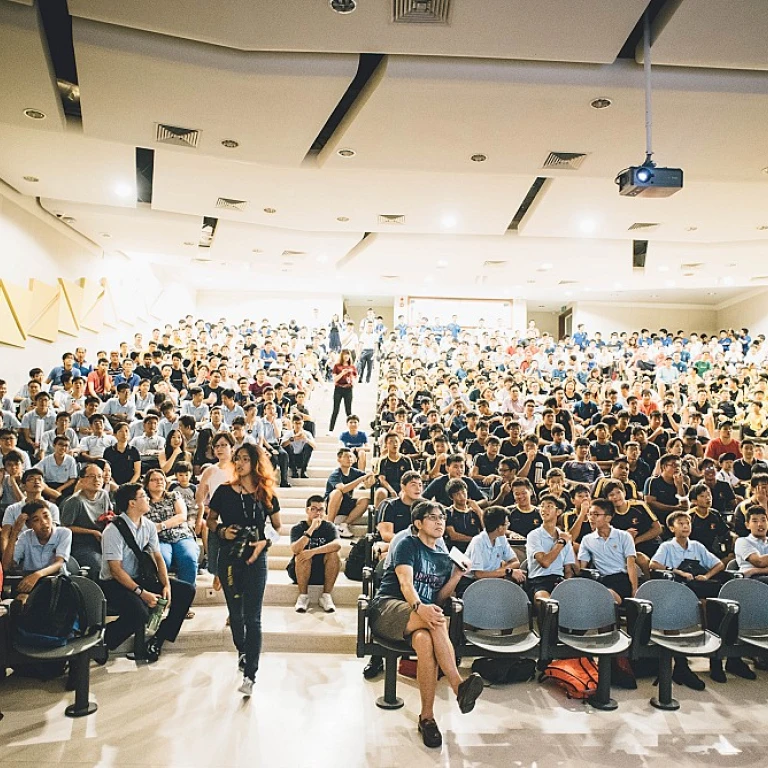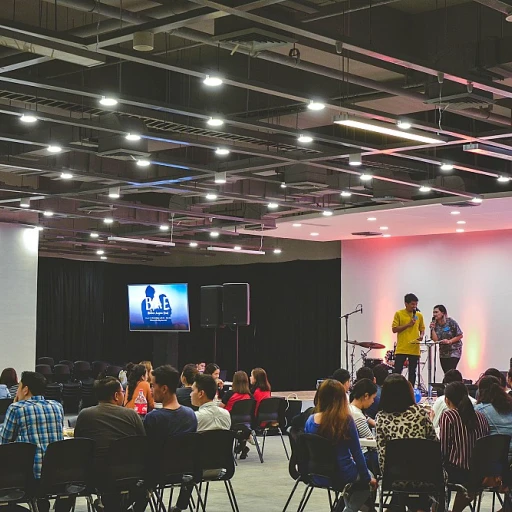
Understanding the 70-20-10 Learning Model
Navigating the 70-20-10 Learning Framework
In recent years, organizations have increasingly recognized the value of the 70-20-10 framework in employee learning and development. This model, though not a one-size-fits-all, provides a versatile approach to enhancing the onboarding process for new employees. Understanding this framework allows organizations to cater to various learning preferences and create a well-rounded introduction to the job. The 70-20-10 model delves into three primary components of learning: experiential, social, and formal. Each element plays a critical role in shaping how employees acquire knowledge and skills during their initial days at work.- Experiential Learning (70%): The predominant form of learning in this model involves informal, on-the-job experiences that help employees adapt and excel in their roles. This aspect emphasizes performance support and real-world job learning, allowing employees to learn directly through doing.
- Social Learning (20%): Interaction with team members and peers is key to learning from others. It incorporates knowledge sharing and collaboration, contributing significantly to job learning and talent development.
- Formal Learning (10%): Although smaller in percentage, structured training programs form the backbone of initial employee education. They supply the foundational knowledge and skills needed to succeed in the work environment through organized and formal learning experiences.
The Role of Experiential Learning in Onboarding
The Significance of Real-World Job Experiences
Experiential learning plays a crucial role in effective onboarding programs. This approach emphasizes learning from on-the-job experiences, enhancing knowledge acquisition and development through practical application. Real-world job experiences allow new hires to take part in the organization's daily activities, thereby facilitating the transition from theoretical understanding to actual performance support.Integrating Learning into Daily Work
Experiential learning is about melding learning and work. By immersing employees in real job scenarios, organizations foster a dynamic learning environment. This integration helps new employees to understand their roles more profoundly, contributing to their immediate performance and future growth within the company’s framework. This seamless fusion of learning and working processes supports a continuous learning culture.Informal Learning: The Unplanned Knowledge Exchange
Informal learning complements experiential learning by capitalizing on unplanned interactions and spontaneous knowledge sharing. When team members collaborate, they learn from each other's experiences, which enhances their overall development without needing structured training programs. This social and informal approach ensures that employees learn from their surroundings and co-workers over time.Linking Experiential Learning to Outcomes
To effectively incorporate experiential learning in onboarding, organizations should structure job learning opportunities that allow new hires to engage in tasks with real implications. By doing so, new employees not only acquire technical skills but also gain insights into the organization’s culture and values. Linking these experiences (https://www.onboarding-experience.net/blog/enhancing-your-skills-with-a-sales-leadership-development-program) to desired outcomes ensures productive and meaningful development. In summary, experiential learning facilitates active engagement and promotes a holistic model of learning. When balanced effectively within the onboarding process, it results in well-rounded, competent, and confident employees ready to drive the organization towards success.Leveraging Social Learning for New Hires
Unlocking New Potential through Collaborative Learning
In the onboarding framework, leveraging social learning offers new hires invaluable opportunities to learn from team members and peers. This method champions the idea that employees learn not just through formal training but also by engaging with their colleagues and absorbing knowledge in a more organic manner. Social learning holds the potential to create a robust learning culture within an organization. By encouraging knowledge sharing and collaboration, new employees can harness collective expertise and cultivate meaningful relationships. This ultimately fosters their job learning experiences, supporting their performance and helping them integrate into the company's work dynamics more seamlessly. Moreover, integrating social learning can significantly enhance the development of interactive and informal learning experiences. As new hires navigate their roles, informal interactions, such as shadowing a colleague or participating in team discussions, can provide them with real-time insights and practical skills. This complements the structured training programs and bolsters their learning development. To ensure effective implementation, organizations need to create environments that encourage open dialogue and peer-to-peer learning. Offering avenues for employees to connect and share insights, such as mentorship programs or collaborative platforms, can greatly enhance the onboarding experience. Thoughtfully designing these social learning opportunities supports talent development and prepares employees to contribute meaningfully to their teams. By weaving together elements of both formal and informal learning channels, companies can create a comprehensive onboarding experience. Striking the right balance allows new hires to learn at their own pace, gain confidence, and acclimate to their roles efficiently. Moreover, nurturing these connections can pave the way to developing future leadership qualities in the employees, aligning with the broader goals of the 70-20-10 model. For those interested in further insights on optimizing onboarding through the contributions of leadership development and effective team integration, consider exploring enhancing onboarding with effective lead managers. This can provide additional strategies for encouraging successful assimilation and impressive performance support for new employees across various levels.Formal Learning: Structured Training for New Employees
Structured Training: Building a Foundation
Formal learning plays a crucial role in the onboarding process, providing new employees with the structured training they need to succeed in their roles. This aspect of the 70-20-10 learning model focuses on delivering organized and systematic knowledge transfer, ensuring that new hires have a solid foundation to build upon.
Formal training programs are designed to equip employees with essential job knowledge and skills. These programs often include a combination of classroom sessions, online courses, and hands-on workshops. By offering a comprehensive curriculum, organizations can ensure that new team members are well-prepared to meet the demands of their positions.
Incorporating formal learning into onboarding not only enhances the learning experience but also supports the development of a learning culture within the organization. This culture encourages continuous learning and development, fostering an environment where employees are motivated to grow and improve their performance over time.
Integrating Formal Learning with Other Methods
While formal training is essential, it should be integrated with experiential and social learning to create a balanced onboarding program. By combining structured training with real-world job experiences and opportunities for social learning, organizations can provide a more holistic approach to employee development.
For instance, after completing formal training sessions, new hires can be paired with experienced team members for mentorship and guidance. This approach not only reinforces the knowledge gained during formal training but also facilitates informal learning through knowledge sharing and performance support.
Ultimately, the goal is to create a seamless transition for new employees, enabling them to apply what they've learned in a practical setting. By leveraging the strengths of each learning method, organizations can enhance the overall onboarding experience and set their employees up for long-term success.
Balancing the 70-20-10 Model in Onboarding Programs
Integrating the 70-20-10 Framework in Onboarding
Balancing the 70-20-10 learning model within onboarding programs requires a thoughtful approach to effectively integrate experiential, social, and formal learning aspects. The goal is to foster a comprehensive learning culture that enhances employee development.- Experiential Learning: Job Experiences and Informal Learning
Experiential learning, making up 70% of the model, focuses on job learning through hands-on experiences. This can be achieved by immersing new employees in real work scenarios early, allowing them to learn by doing. By assigning challenging tasks that prompt problem-solving and decision-making, organizations can enhance their informal learning opportunities.
- Social Learning: Encouraging Knowledge Sharing
Social learning accounts for 20% of the framework, emphasizing the importance of learning from peers and leaders. Encouraging knowledge sharing among team members helps create a supportive environment where guidance and feedback are readily available. Organizations can facilitate social learning by setting up mentorship programs and promoting dialogue among employees.
- Formal Learning: Structured Development Programs
Formal training programs, representing the remaining 10%, provide structured learning development. This includes formal training sessions, workshops, and digital adoption tools to complement an employee’s learning journey. Formal learning ensures that employees receive foundational knowledge necessary for their roles, supporting their overall performance.
Measuring Success: Evaluating Onboarding Effectiveness
Assessing Onboarding Impact: Key Metrics for Success
To understand the effectiveness of an onboarding program, it is crucial to implement evaluation strategies that measure key performance indicators. Companies can adopt a framework incorporating formal, experiential, and social learning. The evaluation process helps organizations fine-tune their onboarding for enhanced employee development and performance.
- Employee Retention Rates: Examine the retention levels of new hires over time. An effective onboarding program usually leads to higher retention rates as employees feel supported, knowledgeable, and integrated into their roles.
- Speed to Proficiency: Track the time it takes for employees to reach full productivity. An efficient blend of experiential, formal, and social learning helps accelerate skill acquisition and job learning.
- Employee Performance: Monitor performance metrics to understand how onboarding improves job experiences and overall work quality. This can be achieved through regular feedback and performance reviews.
- Feedback and Employee Experience Surveys: Solicit feedback from new hires to gauge their onboarding experience. This informal method offers insights into learning development and areas requiring improvement.
- Learning and Development Milestones: Evaluate if employees have met learning goals through formal training programs, reflecting their preparedness and confidence in their roles.
- Leadership Development Opportunities: Consider how well onboarding prepares employees for leadership and talent development, signaling long-term investment in employee growth.
Combining these metrics with an understanding of the 70-20-10 learning model ensures that onboarding programs align with organizational objectives and extend beyond initial employee integration. By capturing diverse experiences and learning outcomes, organizations can foster a robust learning culture that supports continuous improvement and success.












